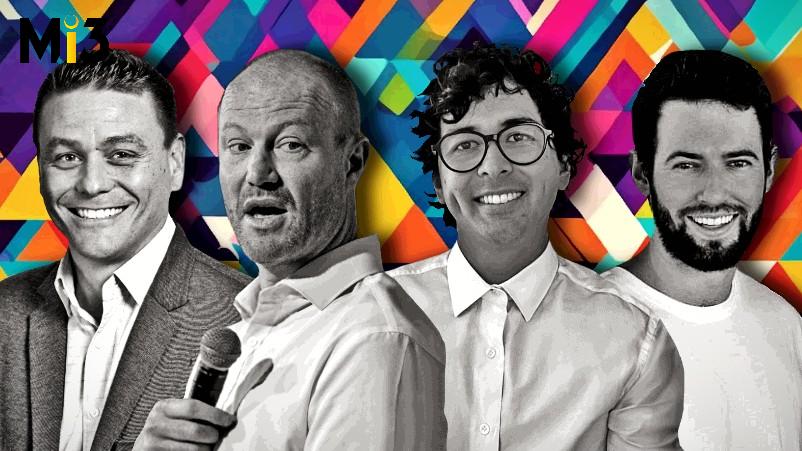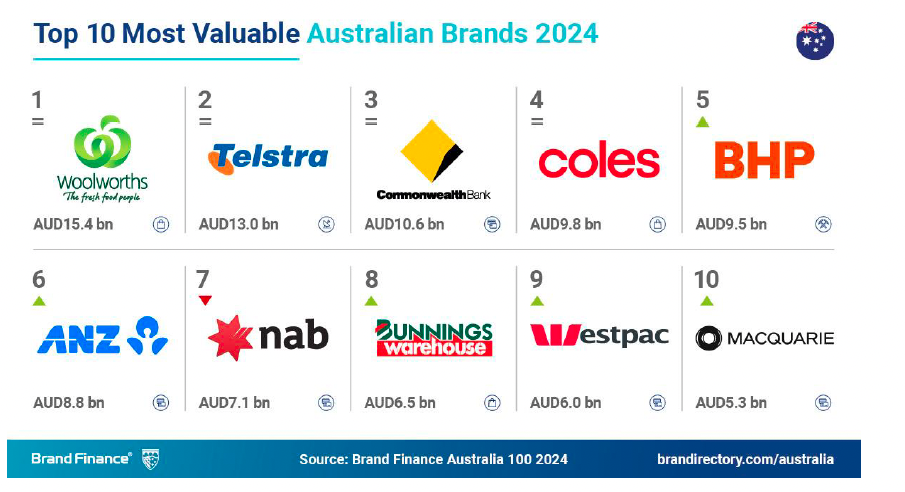The new email: Lounge Lovers, Designstuff, Hey Bud tap SMS as the new strategic marketing channel, notch huge ROI – but can they avoid reach-driven pitfalls of the past?

What you need to know:
- With over 125 per cent revenue growth in Australia and more than 200 brands regionally on its platform including Lounge Lovers, Designstuff and Hey Bud, SMS vendor Attentive is signalling rapidly growing interest in SMS as a viable, scalable and interchangeable alternative to email marketing.
- Speaking to Mi3 and on a panel during the vendor’s recent Sydney event, Lounge Lovers head of marketing and digital trade, Sven Lindell, was one of several panellists and speakers touting stellar results from leaning in to SMS, including upping its database by 39,000 in under five months, securing up to 100:1 ROI on some campaigns and chalking up an overall ROI over the past year of 55X.
- Lindell, along with Designstuff’s Matthew Harrison and Hey Bud’s Oliver Watts, also cited full-funnel marketing plays in SMS, from traditional pointy-end communications such as fast cart abandonment and performance tactics through to sharing inspirational content to build emotional engagement with customers, two-way customer service messaging and advocacy. All agree the combination of SMS with CDP and first-party data personalisation is gaining even higher results for their brands.
- For Lindell, it’s also a welcome reprieve to have another channel against Google, where he’s seeing skyrocketing acquisition costs, as well as another channel to build out Lounge Lover’s CRM program. And he says SMS is now almost better value than the fixed costs of running the retailer’s email platform, “which is interesting”. What’s more, the team has been able to get one phone number for every three emails through an easy, double opt-in SMS program that’s fully compliant, Lindell says.
- At Designstuff, a pivot towards sharing inspirational and educational content via SMS has seen clickrates through to the website of upwards of 30, 40 per cent. Per Harrison: “That’s written in a way of saying ‘hey you have to check out this house’. We’re trying to bypass that old school, ‘buy, buy buy’ by being more content driven,” says Harrison.
- Meanwhile at Hey Bud, a FOMO campaign targeting recent purchasers achieved a 36 per cent revenue increase compared to campaigns sent through its previous SMS provider, Klaviyo.
- Provided brands go two-way, they’re also see great advocacy and satisfaction returns, says Attentive regional VP APAC, Zach Hotchkiss. He says: “If someone says I’m sorry, let me look in real time and get you a status update or refund your shopping – with two-way engagements like that, we’ve seen a +30 per cent increase in conversion. And it turns detractors into promoters.”
The first trigger to rethink marketing channels for Lounge Lovers head of marketing and digital, Sven Lindell, was an overly heavy reliance on performance marketing. The second was the brutal realisation the retailer was facing skyrocketing costs paying Google’s controlling machines to get 70 per cent of traffic just from shopping within Google alone – “not all of Google itself”. The third was a desire to diversify beyond email as the sole method of direct communication via CRM.
So 12 months ago, Lounge Lovers invested in Attentive’s marketing platform and started leaning in to SMS. And it’s paid dividends, according to Lindell. In under five months, the retailer increased its 1000-strong SMS list to 40,000, and seen up to 100:1 ROI on campaigns run through the text-based communications medium.
In fact, an end-of-financial year sales campaign targeting high-potential customers within its CRM program resulted in more than 700 sofa sales attributed to SMS. In the last year, Lounge Lovers’ efforts have driven 55x ROI.
“That’s almost better than the fixed cost running of our email platform, which is interesting,” Lindell tells Mi3.
“The big thing for me was looking at what channels we need to grow into and where can we have the most impact on the business. And there was this big hole. We were quite advanced in terms of what we were doing from a paid ads perspective, and had a team managing that. For a size like ours, that’s a bit of a rarity. Even at Temple & Webster [one of Lindell’s former employers, along with Winning Group, where he was CMO] they use an agency. But I think once marketing spend gets to a certain amount, it’s important to hold that internally.”
Then there was an email program developed with Lounge Lovers’ ESP which was getting better but left the business riding a one-horse CRM communications race.
“If customers don’t want to hear from you through that channel, you were done for and lost all ways of communicating, except when you paid another $5 to Google to acquire them again,” comments Lindell. “With SMS, if you can acquire the contact in a relatively cost-effective way, it scales, and the ROI is usually there based on the medium itself.
“I always had email programs work in and around that 100X ROI – big, fixed cost to run but when it scales, it scales really well from an ROI perspective. SMS has now come into that and by building into our automations, it’s pretty much at the same ROI that email took years to build up, and in a matter of months.”
Another eye-opener for Lindell is the rate the retailer has been able to collect mobile phone numbers.
“For every three emails we get, we now get one phone number. That’s huge compared to where we were – it used to be for every 10 we’d get one. That’s because it’s a really easy journey to sign-up in a way that’s compliant,” he says.
Lindell puts some of this down to consumers recognising “there is more give and take” with brands. “As a consumer, I’m prepared to give you this at the start as you’re giving me a little – a first-time purchaser gets 20 per cent, or $5 off your purchase on an ongoing basis if you’re part of the program. But that only lasts for certain time. Unless you’re listening or being quite respectful of that,” he says.
The result is SMS as increasingly interchangeable with email in Lounge Lover’s customer journeys.
“We’d sometimes start one journey with SMS and finish with email or the other way around just depending on what we feel is working better or not,” Lindell explains. “The good thing about bringing this into that central data hub is you see if a customer has opened or clicked one channel in a series of communications. As soon as they start preferencing one, and the other stops being used, you go ok, I’ll reorient more to that channel as I know you’re engaging with it.”
What’s more, Lindell says SMS is a viable full funnel channel and not just sitting at the bottom end of the purchase funnel. Yes, basket abandonment is hands down still the best performer.
“Even if you have attribution models you use, it’s typically going to give the bottom action kudos for the transaction. But the sky is the limit after that,” Lindell says.
“How do I engender and build customer satisfaction and loyalty in the purchase process: Am I using SMS to keep them up to date with their orders? Or is it about our delivery truck being on time and when it will be there? We find that’s where we get the most use out of SMS. Then also in the follow up: We don’t even use emails anymore to follow up on a customer order when we ask them to leave a review on us. We’re now moving to integrate SMS with the quoting system – that’s where the rubber hits the road. You almost can’t over-communicate with someone enough once they’re in market.”
As a result, Lindell sees SMS becoming a firm fixture in marketing strategies. “It’s not whether SMS is a successful medium – I think we’ve been proving that and understand that – it’s more how to make sure we can slide it into the purchase journey at the right time for the customer that will interact with that medium.”
The big mistake [with email] has been the sheer volume we send out. I think everyone would say that. It wasn’t too long ago that if you were talking to private equity, or putting together board papers / investor decks, a big part of the ask is how big is your database. Is that the right question now? I think it’s now: How responsive is your database?
The art of messaging
Lounge Lovers is one of 200 brands using the Attentive platform regionally, helping the vendor chalk up 125 per cent revenue growth in Australia. Others include July, Ghanda, Designstuff, Hey Bud, Lounge Lovers and Ultra Football.
The vendor’s research presents numbers arguing why. More than 87 per cent of Australian consumers are interested or have already signed up to receive texts from brands. Also according to Attentive, clients who have adopted a two-way SMS communications see +30 per cent increases in conversions versus those lacking an asynchronous SMS approach.
Other third-party data points indicate growing acceptance of SMS for marketing. Salesforce’s State of the Connected Customer 6th edition released last August found 66 per cent of companies are engaging with customers via text/SMS, compared to 76 per cent in mobile apps, 65 per cent in messenger apps and 64 per cent via social media. Email is still dominant of course at 93 per cent, followed by phone (88 per cent) and in-person (86 per cent).
Meanwhile, a May 2023 study by SimpleTexting on why US marketers have started using text message marketing include higher levels of engagement from customers (60.5 per cent), higher open and clickthrough rates than other channels (53.5 per cent) and because it’s the most efficient channel for customer service or tech support (52.3 per cent). A recent survey of 8,000 shoppers by Klaviyo – Attentive’s competitor – also found 72 per cent of respondents had made a purchase after receiving a text from a brand (69 per cent in APAC). Of these, 14 per cent said they made a purchase when they weren’t thinking about buying at all.
During a panel at Attentive’s event last week, Bazaarvoice APAC lead for content and creators, Ahad Malik, noted 38 per cent open rates with SMS are not unusual compared to averages of 20 per cent on email. He also cited significant better responsive rates – 45 per cent in SMS, versus single digits in email.
“Couple that with the advantage of speed and it makes SMS a very unique, compelling channel to drive time sensitive offers – and you can add in an additional layer of personalisation for more intelligent time sending,” he said.
Fellow panellist, Lexer head of sales and partnerships, Aaron Luxmoore, said SMS is offering cut through in a terrible cluttered retail market. He cited the CDP vendor’s clients seeing 37 per cent conversion rates on average with SMS abandonment cart messaging.
“Talking to CMOs, they previously saw SMS as a bit of a bolt-on and separate tool to do a few strategies with. Now they’re seeing results and incorporating SMS into their omnichannel strategies, so it’s part of the DNA of their wider marketing strategy,” he said. “Most clients would say SMS is a top-performing channel now,” Luxmoore added, citing clients including Just group, Zimmerman and Cotton On. Helping spur on interest is the combination of SMS with personalisation and more sophisticated segmentation capabilities, as well as two-way communication, he claimed.
Attentive regional VP APAC, Zach Hotchkiss, also argued SMS can turn detractors into impactors – provided you’re using two-way SMS, something reportedly still lagging across brands.
“If someone says I’m sorry, let me look in real time and get you a status update or refund your shopping – with two-way engagements like that, we’ve seen a +30 per cent increase in conversion. And it turns detractors into promoters,” he said.
Let’s face it, customer attention spans aren’t getting any longer either, Hotchkiss added, adding to SMS’s appeal. “Generational changes are happening in front of us and TikTok is not making us any more patient. It’s so important to be quick and snappy with messaging.”
With SMS, I see us as being in a very privileged position to have someone’s phone number and we can contact them while they’re sitting on the couch, they get a notification and that’s really personal. We have experimented and found great success by tailoring messaging to say ‘hey, how are you, are you having a great day, notice you were on the website and thought you’d be interested in knowing about this’.
Empathy, inspiration and SMS
One local brand growing its SMS investment is furniture scale-up brand, Designstuff. The retailers switched out Klaviyo for Attentive last October after finding the former too clunky for a small team of 10 to manage. It now has a database of about 5,000 subscribers, with a sweet spot in the millennial demographic.
While automations ensure welcome journeys, cart abandonment reminders and some promotions, Designstuff’s emphasis has increasingly been on conversational style and promoting inspirational blog content via SMS, says Designstuff content and campaigns specialist, Matthew Harrison.
“We’re all about storytelling, so it’s trying to foster that community, we’re not just a brand selling you stuff, we’re a brand to get inspiration and advice from,” he tells Mi3. “With SMS, I see us as being in a very privileged position to have someone’s phone number and we can contact them while they’re sitting on the couch, they get a notification and that’s really personal. We have experimented and found great success by tailoring messaging to say ‘hey, how are you, are you having a great day, notice you were on the website and thought you’d be interested in knowing about this’.”
One of Designstuff’s best-performing SMS campaigns has been promoting the once-a-month photo shoot the retailer does in one of its customers’ homes.
“We see clickrates through to website of upwards of 30, 40 per cent. That’s written in a way of saying ‘hey you have to check out this house’. We’re trying to bypass that old school, buy, buy, buy by being more content driven,” says Harrison.
With the upcoming launch of an entertaining outdoor range in spring, Harrison says he’s positioning the collection via SMS as helping consumers take advantage of the good weather, “rather than just saying we have this new range and here it is”.
“We do get surprised now and then. We’ve had to pivot firstly our offering, but also who we are targeting. We have found we’re leaning into that older generation, who have paid off their mortgages and aren’t as impacted by inflation. By building that warmth in SMS and figuring out what it is that this consumer set wants from us, we’ll be able to maintain and grow in some areas – by product category. That’s where targeted SMS has really helped us,” he says.
A shift from WeCommerce to Shopify in October is also expected to open a lot more personalisation for Designstuff in both email and SMS.
“It’ll help us get right down into what product is it everyone is leaning into, more RFM metrics as well,” Harrison says.
Another Klaviyo to Attentive convert is Aussie skincare brand Hey Bud. The brand cites 24-34-year-olds as its target demographic, with a customer base that’s 75 per cent female. Co-founder, Ollie Watts says connecting SMS into journey flows and campaign messages around product launches, Black Friday sales and other key events all proved useful.
“Anything where we thought it was important to have that small touchpoint of SMS,” he says. “With SMS, we’ve become more responsive to customer behaviour. For example, our FOMO campaign targeting recent purchasers achieved a 36 per cent revenue increase compared to campaigns sent through our previous SMS provider.”
Hey Bud’s focus is on expanding its SKU range as well as building engagement both in online channels as well as offline.
“We know consistency of foot traffic in store is higher than online, which is so dependent on ads, so we have expanded quickly offline. It’s maybe somewhere we could use Attentive more. We don’t usually announce sales in-store, but we definitely could use SMS there,” Watts comments. “Having those extra data points, especially given the drop in cookies, knowing what customers are anonymously browsing on your website and being able to target more specifically are all wins.”
With SMS, we've become more responsive to customer behaviour. For example, our FOMO campaign targeting recent purchasers achieved a 36 per cent revenue increase compared to campaigns sent through our previous SMS provider.
Avoiding email pitfalls of reach over responsiveness
That said, the days of volume email and spam rules are not far from Lindell’s mind, and he agrees brands are going to have to do a better job of choosing when to send SMS if they want to keep it impactful.
“The big mistake [with email] has been the sheer volume we send out. I think everyone would say that,” Lindell says. “It wasn’t too long ago that if you were talking to private equity, or putting together board papers / investor decks, a big part of the ask is how big is your database. Is that the right question now? I think it’s now: How responsive is your database?
“If I have 50 people who are responsive, giving me $50,000 a pop over 100,000 giving me $1 a pop I know what I want. But that question usually never gets asked when you’re building these decks. We have to show bigger is better, reach and volume, because it means these other guys have said they’re this big and I want to show I’m that big too. With some of the reporting you have to do, that’s the game. The problem is that then informs the strategy and that strategy is unfortunately wrong.
“I’d say going back to the engagement in these channels is the critical metric, not the growth.”





